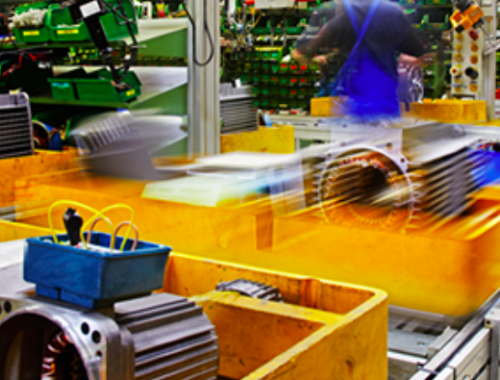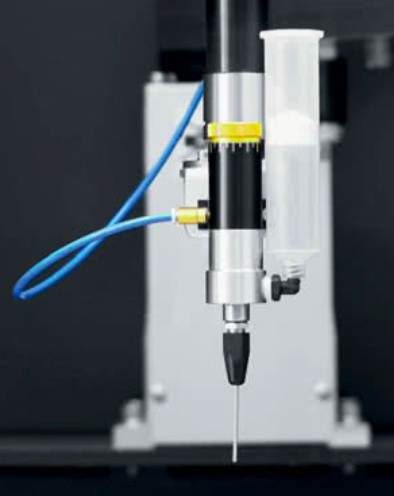Global manufacturers striving to maintain productivity are becoming more dependent than ever on rapid automation. However, increasing productivity while maintaining quality is increasingly difficult with conventional automation.
Almost any change in the speed of a process, especially when it involves elements such as dispensing or coating, involves tuning equipment and production lines. Typically, only a small number of skilled and experienced technicians are able to perform such a task without compromising the quality of the final product. This is an obvious problem for companies that want to introduce new products and respond to market needs in a smooth and flexible manner.
YAMAHA Robotics draws on its many years of experience working with customers across a broad spectrum of industries. The company has supported automation in such industries as automotive, electronics and medicine. In this paper, we will look at the use of YAMAHA solutions in the automation of dispensing and coating processes.
Precision and efficiency
One of the most common processes in the subject under discussion is sealing along the edges of juxtaposed metal castings or plastic parts such as covers and housings. Often this task is accomplished using conventional drives, motion control systems and seal dispensing systems.
In order to apply a continuous line of sealant, the motion control system must accurately follow the designated path along straight edges and in corners. Typically, the speed must be reduced in the corners to maintain accuracy. At the same time, the speed along straight edges should be as high as possible to reduce the overall process time.
To ensure a constant volume of sealant at all locations, the dispensing mechanism must therefore reduce the flow of sealant in the corners where there is less speed and increase the flow when the drive moves faster.
This is a difficult process to set up properly – often requiring expertise. Incorrect setup can lead, for example, to excessive material in the corners, resulting in defective products and the need to reject them as defective. The alternative, the safe setting of a constant low speed of movement and dispensing – as much as it simplifies process control – however, lengthens the cycle time and thus reduces productivity.
Needless to say, manufacturers want to achieve both high quality and high speed – without depending on specialized skills. This requires a solution that can automatically adjust the material dispensing rate as the speed changes, thereby applying the desired amount of material at the maximum possible speed.
Automation with robots
The solution to this problem is the use of industrial robots and controllers of the latest YAMAHA RCX series. Through the YAMAHA RCX340 controller, the user can both control the robot’s movement and configure the dispenser’s operation. It allows control of the dispensing speed in combination with control of the robot’s movement speed. The system thus makes it easy to achieve optimal rates – the highest possible speed while maintaining dispensing precision. The “servo-linked dispensing” function (Figure 1) is available for YAMAHA SCARA and Cartesian robots.
The controller enables easy control of multiple robots and supports an expanded instruction set that includes dedicated vision instructions that simplify programming and help minimize hardware startup time. The RCX STUDIO 2020 development environment supports debugging functions for multi-task control and provides features to speed up program entry and enable quick setup.

Using communication interfaces commonly used in industrial automation, the system can be easily implemented into existing factory environments. In addition to RS-232C and Ethernet ports, the RCX340 supports popular field buses such as CC-Link, EtherNet/IP™, DeviceNet™, PROFIBUS, PROFINET and EtherCAT. Connections to universal servo amplifiers or third-party vision systems are also easily implemented and simplify introducing robot technology to legacy manufacturing processes.

High-quality coating in practice
YAMAHA Robotics recently helped an automotive customer accelerate the precise distribution of liquid sealants on aluminum castings using an RCX340 controller and YAMAHA robots. This manufacturer was unable to increase productivity by increasing the speed of the existing automatic dispensing system. Simply increasing the speed disrupted the control of sealant dispensing, resulting in excessive amounts of material being applied where the speed was slower. This forced the company to use the equipment at a constant speed, resulting in slower cycle times.
Looking for a faster solution that was also easy to set up without skilled technicians, the project team leader contacted YAMAHA to see if robot technology could be a practical alternative. After seeing a demonstration of servo-driven dispensing, YAMAHA quickly installed a test system at the factory to explore its potential.
The results were obvious – the production speed was increased, and our analysis showed that the coating quality was excellent. We also consulted YAMAHA about the batching process, which we had previously configured based on our own experience. The additional expertise helped us calculate the optimal settings very quickly, which significantly reduced the workload for our own engineers.
Convinced that it was a solution that would achieve the desired increase in speed and stable quality, the project team moved to final verification and then implemented the process on the assembly line. The company is now exploring the possibility of using YAMAHA robots to improve other processes in the factory.
Off-the-shelf solutions
Automation of processes such as dispensing or coating can be further facilitated by off-the-shelf solutions. YAMAHA SCARA manipulators have been used in the REECO Robot series awarded with the TERAZ POLSKA emblem. It includes Soldering Robots, Screwing Robots, as well as Dispensing and Coating Robots of particular interest from the point of view of this study.
Awarded the TERAZ POLSKA emblem in 2020, REECO Robots were created to operate in manufacturing and production-service plants. For this reason, they feature solutions that enable both offline and in-line operation, including, depending on the model, two transport options: edge and rotary table. The first option allows for any combination of several robots or combining them with other types of equipment, and thus the implementation of many tasks and more complex processes. The second option, in the form of a rotary table, which is new in REECO’s offer, makes it easier and faster to manually feed the workpiece (e.g. a PCB) into the workfield.

What is particularly important, all devices in this series, in addition to using YAMAHA components in them, have been based on the REECO Robotic System. Thanks to this full compatibility, the head can be changed in these devices. For example, the Varnishing Robot can, if necessary, be functionally changed into a soldering robot, a twisting robot, a dispensing robot or any other – in a custom-made application. This gives users the ability to respond to changing market pressures or production needs and quickly reorganize line elements without having to purchase a new machine.

REECO Dosing Robot
The REECO Dosing Robot is a ready-to-implement device that allows automatic and precise application along a predetermined path of substances (media) of different densities such as adhesives, gaskets, paints, lubricants and others of similar consistency. The object on which the substance is to be applied is introduced into the working field, where the head, equipped with a suitably selected nozzle, distributes the substance according to the programmed scheme and in precisely measured quantities.
This makes the process independent of the operator’s manual skills and allows for accuracy and repeatability that the human hand is not capable of. All of this minimizes the costs and process problems associated with applying too little or too much of a substance – particularly leakage and the resulting dirt. As a result, robotization speeds up the process, minimizes wear and tear on the applied substances themselves, and reassures the user that products are produced with the highest possible precision.
REECO Coating Robot
The Coating Robot is a new device in REECO’s product range responding to market demand in the sphere of automation of the conformal coating process. However, the device allows for the automation of production steps involving the spray distribution of various liquids. The machine is equipped with a spray valve to ensure even application of liquid coatings of low to medium viscosity and an innovative integrated nozzle cleaning system that eliminates the problem of manually cleaning the valve.
A distinguishing feature of the device is the ability to freely configure the dispensing systems and dispensing valves on the robot head. This allows it to be tailored to the specific application and materials (media) to be distributed. Up to three different valves can be mounted on the head of the device. This gives the possibility of simultaneous dispensing of up to three media, increasing efficiency and reducing the time of a single cycle. The device can be optionally equipped with traceability software that collects statistical data in the course of ongoing projects.
What’s next?
YAMAHA and REECO equipment and robots can be seen and tested in action at the RENEX TECHNOLOGY AND TRAINING CENTER. Within this center, RENEX Group – which is one of the largest Polish companies in the electronics industry, as well as the distributor of YAMAHA Robotics for Poland and the Balkan countries – pursues its mission of providing comprehensive services to the electronics industry.
RENEX TECHNOLOGY AND TRAINING CENTER supports the adaptation of processes in companies operating on the market. This is especially true for those entities that develop or implement their own production of electronic packages and devices, or those that seek to automate their processes, widely understood here, through the implementation of industrial robots. The center also provides consulting services in the field of ESD protection and the creation and proper maintenance of EPAs (electrostatic discharge protection zones).


Summary
In order to remain competitive, manufacturers in many industries – including automotive – continue to implement new technologies into their manufacturing systems. Processes continue to be optimized – to reduce cycle times while maintaining the desired quality. Robots combined with the latest motion control technologies and tools to support programming and configuration are the ideal solution to this problem.
Dispensing and spreading processes can also be automated with the introduction of ready-to-implement equipment in the form of REECO Dosing Robots and Coating Robots. The processes of implementation, training and service can be further facilitated by the support of RENEX TECHNOLOGY AND TRAINING CENTER specialists.